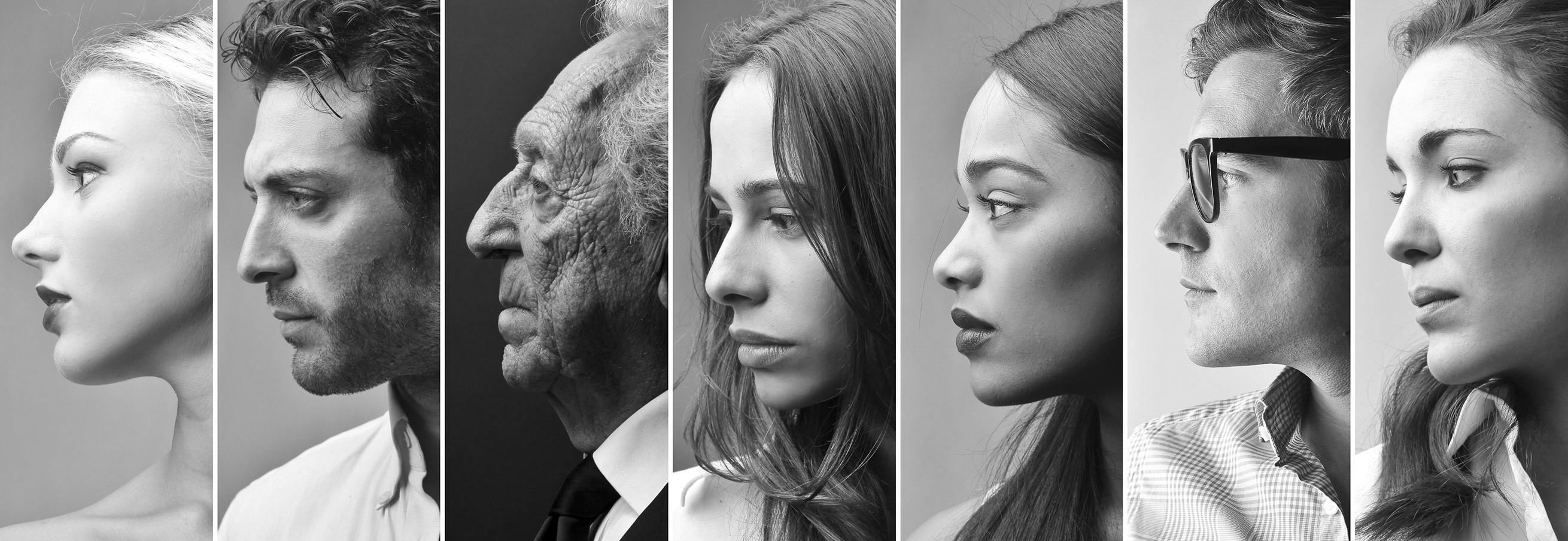Why is rhinoplasty so popular today?
Our age has increasingly been based on visuality, and one of the prominent reasons of this trend is social media. We are in an age that social media is much more than a social identity; today, it affects even the business world. This increased the importance of the visual identity significantly. The most important factor defining our visual identity is self-assurance. And nose is the most important and central point of our faces. Considering all these facts, we can say that being unhappy with our noses is a much bigger problem for us compared to past. With the dramatic increase in nose remodelling rates, rhinoplasty has become a speciality field improving in terms of both technique and experiment.
What is the point making rhinoplasty more superior and
special than other aesthetic operations?
Since the day I become specialist in aesthetic and plastic surgery, I’ve been most interested in rhinoplasty.
I think, among all other aesthetic operations, rhinoplasty is the most skill and experiment required-field. Each nasal operation requires a special approach to be called as “tailor-made”. Even if you had performed thousands of operation, nasal operation is a surgical field requiring high attention and the skill of evaluating a case from different perspectives.
Do you find yourself looking, or even thinking to
perform an operation at your nose?
I think the most difficult stage of any operation is decision process. Generally, the patients are left alone in this long-term process. Is it really essential? Am I a right candidate? What if I regret? Patient candidates find themselves in two minds between having or not having the operation for a long time.
At this point the decision is only yours. However, on the basis of my experience, I may only say that if you are uncomfortable with your nose, you think of it everyday, even more than once in a day, and this makes you to modify your photos, it is time to meet a specialist and at least get her/his opinion. Be sure that this will relax you.
What about technical chaos?
Aesthetic surgery is the field that share between patient and doctor takes place most.
Aesthetic surgeon certainly needs guidance of her/his patient. The worse the communication between surgeon and patient is, the smaller the chance of success of the aesthetic operation will get. I think, there is a misunderstanding arising from the information pollution created by increasing use of social media and internet. Technical chaos...
At this age, this chaos is mostly caused by surgeons.
While the healthiest patient-doctor relationship requires the patient to demand to be informed on technical aspect of the operation and guide the doctor in terms of the expected result, today, the patients give technical suggestions to her/his doctor. I think the most important factor in a doctor appointment is trust. Be sure that after meeting with a doctor you trust and tell yourself, it would be more relaxing to leave the technical details to her/him.
I’m ready, what is the first step?
You’ve passed the hardest stage; you are ready for the operation now.
Now, it’s time to pass another hard stage by selecting a doctor. You should carry out a research to find a harmonious, experienced and reliable aesthetic surgeon. These can help you in this rocky road: Getting information about the experience of your surgeon, contacting her/his old patients and being able to trust her/him in the appointment are so important. Because surgery is a long road to be covered together. It is so precious to meet a surgeon making the impression of being the right one.
Is my skin thick? Is my skin thin?
Certainly, one of the most mind-occupying factor is thickness of the skin. Thick nose wings and apparent pores on nose tip are indicators of a thick skin character. In this situation, the modelling and nose tip definition is relatively harder and thus, in recovery process, it is necessary to wait for at least 1 year for the absolute result. Because the more oedema occurs, the longer oedema withdrawal process is. However, this may be advantageous in long term thanks to the continuous thinning.
Thin-skinned nose is more advantageous in terms of shaping in early stage, however, when it’s tendency to show the slightest problems, it is wrong to say it is always advantageous. Your surgeon will guide you in this process.
Preoperative process?
If possible, it is best to meet with your doctor twice before the operation. If it is not possible, an on-line consultation via photos and videos is another option.
Nose simulation.
Preoperative design simulations have become an indispensable factor of nose operations recently. These simulations are created by the combination of your profesional preoperative photos taken in our clinic and the opinions your doctor states in accordance with your demands and the realities of the operation. This practice creates a common and tangible language between the surgeon and the patient rather than giving guarantee for the result of the operation.
How should I decide the shape of my nose?
The more you meet with your doctor, the more relaxed you are. The factors playing role in decision process are your facial shape, your character and anatomy of your nose. It is fundamental to believe in your doctor’s aesthetic perception, thus, selecting the right surgeon after a detailed research will relax you.
Is it possible to eliminate also breathing problems in an aesthetic surgery?
Rhinoplasty is a whole. It should be considered in both functional and aesthetic terms. In aesthetic surgeons, the required intranasal interventions are certainly performed. In preoperative process, we perform a video endoscopy and detect all intranasal problems.
Can concha swelling, deviation and septum curvature be also eliminated?
Yes, all these problems can be interfered and the blockage in the air passage can be eliminated in one operation.
Hospital selection.
It’s so important to have your operation in a hospital where you feel comfortable. Asking and searching about your hospital in advance will be more relaxing for you. Condition of the operation room, experience of the anaesthesia team and an assistant-nurse team to be with you throughout the process will make you comfortable and relaxed.
How long does an operation last?
An operation lasts about 1,5 hours. The time between the leaving the room and returning to the room is about 3 or 4 hours. Preanesthesic preparations and other processes are included.
How many nights in hospital after the operation?
We host our patients for a night after nasal operations. She/he is discharged from the hospital the next day.
Is tampon used? How long does the patient stay in hospital?
Does she/he have pain in discharge process?
I prefer to use tampon after each nasal operation to provide the patient to breathe comfortably and control oedema. Because the tampons used are silicone, they do not stick to nasal mucosa and, accordingly, cause pain. The patient can breathe comfortably thanks to the air channel on the tampon. Generally, the tampons are taken after 48 hours.
Splints and nose bandage.
As a postoperative routine, we use plastic splints acting as plasters on nasal cartilages and protecting the new shape of the nose throughout the healing process. Although the period with splints varies by any operation, it lasts about 7-10 days. In the first 48 hours after the splints are removed, nose bandages are used for oedema control.

Is healing process painful?
Nasal operations are one of the least painful operations. According to the statistics based on our patients’ data, 20 of 100 people used painkiller on the first post-operative day and the rate of need to use a second painkiller on the first post-operative day is around 5%. The rest 80% had no need for painkiller.
What about swelling and bruising?
As the damage to nasal tissue is minimized thanks to the new technologies, it is possible to say that no bruising occurs especially in ultrasonic nasal surgeries. However, in light and thin skinned people or people using herbal medicine, the supraorbital and cheek skin may turn to pink. This colour change emerges on the first post-operative day and peaks on the 72th day. After the first week is completed, it regresses almost completely.
Shaping and healing process of the nose.
Upon the removal of the splints, you will see oedema concentrated on especially nose tip, eye level and nasal bridge. This completely normal and temporary formation shows how your tissues respond to healing process. Amount of oedema and swelling may vary by the dimension of the change created in the operation and skin character. Healing process is supported with various massages and special advices. When the first month is completed, most of the rough oedema will significantly regress and after a period of between six months and one year, the shape of the nose will completely emerge.

Will I be able to breathe comfortably soon after the operation?
If you have no breathing problem before the operation, your breathing will return to normal after the rough oedema and intranasal injuries heals in the first month. If you have breathing problem before the operation and the operation is carried out considering this, the healing process may be longer and this problem may disappear in 1 or 3 months. This is completely normal and may vary depending on many factors.
I’ll get married, so I must have this operation immediately. For this popular demand, we should especially emphasize that it is necessary to plan your life considering at least 6 months of healing period.
What if I’m not satisfied with the result?
The importance of mutual trust and honesty to be established in the preoperative appointments with your doctor is most understood at this point. Generally, patients have an adaptation problem in the first month when the nose swells. But after the oedema disappears, everything gets back on the rails. In nasal operations, it is of vital importance to follow-up the process patiently and comply with the suggestions.
Post-operative process.
- In the first 48-72 hours, there will be a silicone tampon in your nose.
- In the first 7-10 days, you will have a plastic splint on your nose.
- If you have a stitch on the nose tip, this area will be applied antibiotic creams and
- Supportive pomades besides sunscreens creams for scarless healing.
- For patency and softening of nasal passages and accelerating the healing process, it is effective and necessary to apply sea water spray into the nose for the first 3 post-operative months starting from the first post-operative day.
- If your skin is thick, it is advised to use nose strip at night for the first few months.
This method accelerates healing by preventing swelling during the day.
Points to be noted in post-operative process.
- For the first 3 months, avoid from all impacts and not to wear glasses.
- Protect the nose against weight while sleeping.
- Avoid your skin from direct sunlight and a sun hat must be used if possible.
- Light exercises may be started after a month, however, it is necessary to wait for heavier exercises for 3 months.
- Too hot and humid places as sauna or Turkish baths should be visited after the first 3 post-operative months pass.
- Swimming in sea is permitted after the first post-operative month, however, pools should be used after 3 post-operative months.
Routine control process.
Routine control process includes the removal of splints and tampons and repeated in the 1st, 4th and 8thp post-operative months. Control processes may vary depending on some factors.
